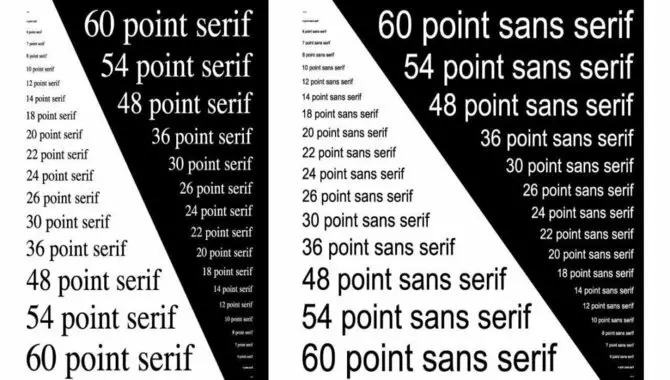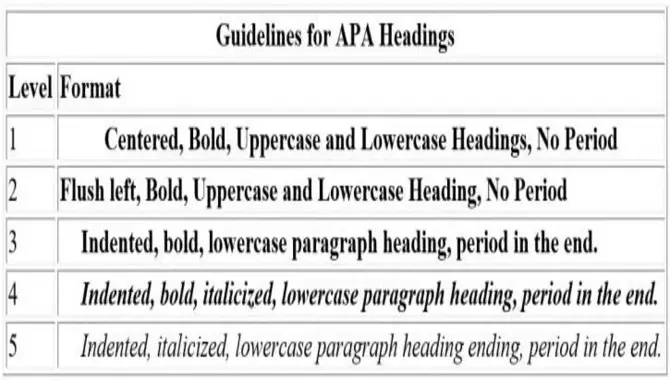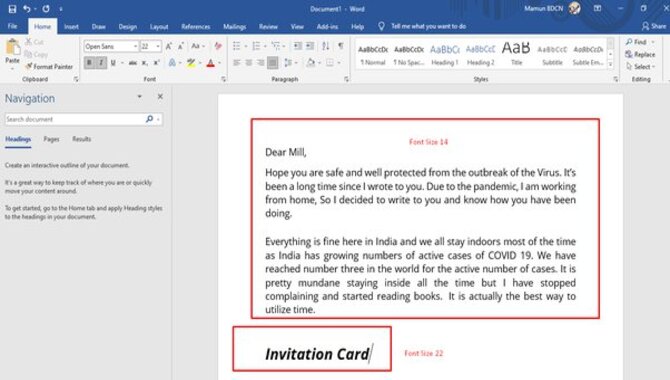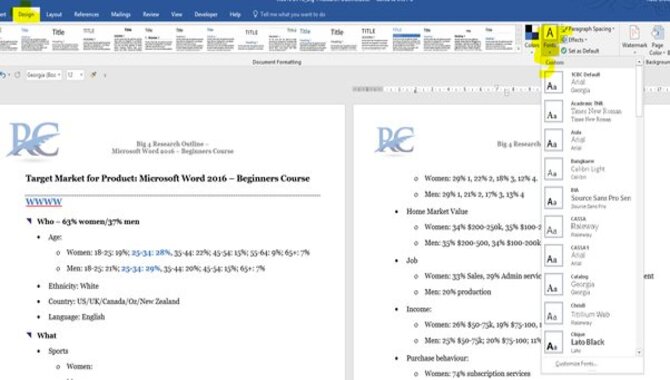The standard font size for academic papers is typically 12-point. Still, it’s essential to consider the specific formatting style required (like APA or MLA) and any guidelines from journals or publishers.
Always follow the instructions given by your instructor, institution, or publisher. We will delve into the world of standard font size for papers. We’ve got you covered, from understanding a standard font size to determining the appropriate sizes for headings, subheadings, paragraphs, and tables. Say goodbye to formatting woes and hello to polished and professional-looking papers!

How To Determine The Standard Font Size For Papers

Determining the standard font size for papers can depend on various factors, including the specific style guide or formatting requirements of the institution or publication you are writing for. Most academic papers are typically written in 12-point font size, such as Times New Roman or Arial.
This standard font size ensures the text is legible and easy to read. However, it is always important to check the specific guidelines provided by your instructor or publisher, as they may have different requirements regarding font size.
Additionally, it is worth noting that some disciplines or journals may have their preferred font sizes, so it is essential to know any specific guidelines that apply to your field of study.
General Rules For Font Size
Following the general rules is essential regarding font size in academic papers. While the standard font size is usually 12 points, it is important to consider any specific guidelines from your instructor or chosen formatting style.
Different academic disciplines may have varying requirements, so it is crucial to consult the appropriate style guide or ask your instructor for their preferred size. Selecting a legible font that is easily read at the chosen size is advisable. Avoid using excessively small or large fonts, negatively impacting readability and overall presentation.
Font Size For Headings And Subheadings

It’s important to ensure they are appropriately sized for readability and professionalism regarding font size for paper headings and subheadings. While the standard font size for papers is typically 12 points, headings and subheadings can range from 14 to 16 points.
It’s crucial to follow the formatting guidelines provided by your instructor or publisher, as different academic disciplines may have specific requirements. Maintaining consistency in font size throughout your paper is key. Using the appropriate font size, you can enhance the overall appearance and legibility of your headings and subheadings, making your paper more organized and user-friendly.
Font Size For Paragraphs
Regarding to paragraphs in academic papers, the font size typically used is 12 points. This standard font size ensures readability and enhances the comprehension of the content. Selecting a font size that doesn’t strain the reader’s eyes or make the text challenging to read is crucial. Avoid using smaller font sizes, as it may lead to eye strain.
On the other hand, using a larger font size may give the impression of unprofessionalism. To maintain consistency and professionalism, it is essential to adhere to the font size guidelines provided by your institution or publisher. Remember, readability plays a vital role in effectively conveying your message.
Font Size For Tables
The standard recommendation is to use a font size of 10 to 12 points when it comes to font size for tables in papers. This ensures that the text within the table remains readable and clear. However, it’s essential to consider the complexity of the table and the amount of information presented.
If your table contains intricate details or small cells, you may need to use a slightly larger font size for readability. Remember to maintain consistency throughout your paper and follow any specific guidelines provided by your instructor or publisher.
Why Is The Standard Font Size Important?
The standard font size is crucial for ensuring readability and consistency in your document. Using standard font size makes it easier for your intended audience to read and understand the content. Additionally, it adds a professional touch to your paper, which is highly valued in academic and professional environments.
How To Set The Standard Font Size For Papers

Setting the standard font size for papers is essential to formatting academic and professional documents. The most commonly used font size for papers is 12 points, as it provides a good balance between readability and conserving space. However, it is always advisable to check the specific guidelines provided by your institution or organization, as they may have their own requirements.
When setting the font size, apply it consistently throughout the document to maintain a professional appearance. Additionally, consider other factors, such as line spacing and margins, to ensure that your paper meets all necessary formatting standards.
Things To Keep In Mind While Setting The Standard Font Size For Papers

While setting the standard font size for papers, several things must be remembered. Firstly, adhering to the guidelines provided by your institution or publication is crucial. These guidelines may have specific requirements or recommendations for font size.
Consider the font’s readability and legibility, making sure it’s easy on the eyes. Opting for a standard font size, such as 12-point, is generally the best choice for easy reading. Use legible font styles like Times New Roman, Arial, Calibri, Georgia, or Helvetica.
Adjusting the font size for headings and subheadings can create a visual hierarchy and make your paper more organized. Remember to heed any additional instructions or preferences from your intended audience or instructor. By following these guidelines, you can ensure that your paper looks professional and is easy to read.
Conclusion
Using the standard font size for papers is essential for maintaining consistency and readability in your work. It helps ensure that your content is accessible to readers and meets the expectations of academic or professional requirements.
You can create a well-structured and visually appealing document by following the general rules for font size and setting appropriate sizes for headings, subheadings, paragraphs, and tables. Remember to consider the guidelines provided by your institution or target audience when determining the standard font size for your papers.
Frequently Asked Questions
Is 11 Or 12-Point Font Standard?
The standard font size for papers is typically 12 points, although some institutions may accept 11 points. However, it’s always best to check your specific guidelines.
Is Size 12 Font Too Big?
No, size 12 font is not too big. It is a standard and widely accepted font size that offers readability and ensures the text is easy to read. However, it’s important to always check guidelines or requirements from your instructor or publisher and adjust the font size accordingly.
What Is The Recommended Font Size For Readability In Academic Papers?
The recommended font size for academic papers is typically 12 points, although specific guidelines may vary among scholarly journals. For optimal readability, it is essential to use a legible font like Times New Roman or Arial and ensure proper formatting, including line spacing and margins.
Does The Font Size Vary Based On The Formatting Style?
Yes, the font size can differ depending on the formatting style. APA and MLA styles suggest a font size of 12 points. However, other formatting styles may have their own guidelines, so it’s crucial to refer to the appropriate style guide for accurate recommendations.
How Can I Use The Standard Font Size For Papers?
To use the standard font size for papers, opt for 12-point Times New Roman or Arial. Ensure consistency in your font size throughout the paper. Instead of relying on a larger font, use bold, italics, and underline sparingly for emphasis.

David Egee, the visionary Founder of FontSaga, is renowned for his font expertise and mentorship in online communities. With over 12 years of formal font review experience and study of 400+ fonts, David blends reviews with educational content and scripting skills. Armed with a Bachelor’s Degree in Graphic Design and a Master’s in Typography and Type Design from California State University, David’s journey from freelance lettering artist to font Specialist and then the FontSaga’s inception reflects his commitment to typography excellence.
In the context of font reviews, David specializes in creative typography for logo design and lettering. He aims to provide a diverse range of content and resources to cater to a broad audience. His passion for typography shines through in every aspect of FontSaga, inspiring creativity and fostering a deeper appreciation for the art of lettering and calligraphy.

